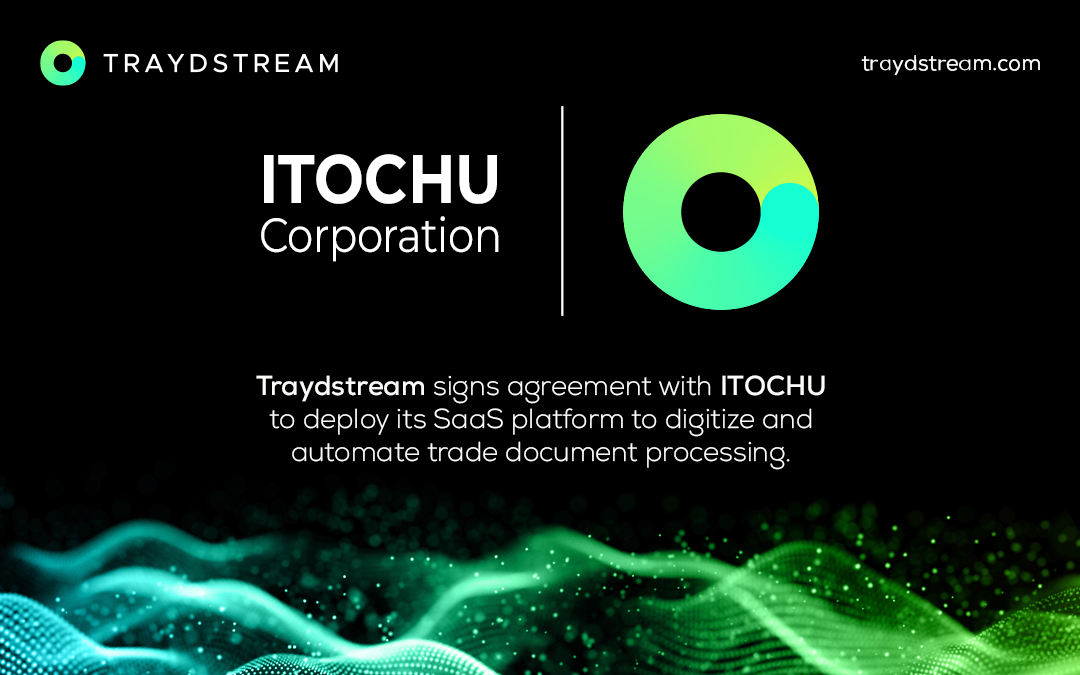
Globalisation and the proliferation of technology have transformed the business world as we know it. But digitalisation is a priority for one industry in particular: trade finance. Greater use of technology could bring numerous benefits to the industry and even help plug the trade-finance financing gap—estimated at US$1.6 trillion by the Asian Development Bank (ADB).
As the ICC (International Chamber of Commerce) Banking Commission’s latest Global Survey on Trade Finance highlights, however, this is also a sector that has yet to fully realise the benefits of new technology. Fortunately, there is plenty that can be done to accelerate the digitalisation of the industry.
 By Dave Meynell, Senior Technical Advisor, International Chamber of Commerce Banking Commission and Owner of TradeLC Advisory
By Dave Meynell, Senior Technical Advisor, International Chamber of Commerce Banking Commission and Owner of TradeLC Advisory Transforming the industry.
Nearly 44 percent of respondents to the latest survey identified digitalisation and technology as areas of strategic focus for business, prioritising the development of—or adherence to—fast-emerging platform propositions. No wonder that they should. Digitalisation has the potential to overhaul the trade-finance industry. Its numerous possible benefits include allowing the convergence of physical, financial and document chains, and the automation of key processes—such as document comparisons, due-diligence checks and generation of purchase orders and invoices.
Just look at how new technology can reduce the costs and complexities of trade finance for banks and corporates, and even enhance working-capital management. Digital contracts, or eDocs, for example, streamline processes and contribute towards operational improvements. The ability to access, examine and approve original eDocs remotely and separately from other parties—anywhere across the supply chain—improves logistical efficiency at banks, ports and terminals. By enabling individuals in different countries to collaborate on drafting documents, eDocs also reduce the chance of errors, centralise processes, maintain data integrity and accelerate the completion of agreements.
What’s more, by increasing visibility and by making processes more efficient and reliable, digitalisation can ease efforts to comply with regulatory requirements. According to Misys’ contribution to the “Rethinking Trade and Finance” report, the elimination of paper from trade-finance transaction processing could reduce output time by two hours per transaction, and the appropriate application of technology to compliance-related processes and procedures could reduce compliance costs by 30 percent or more.
Companies should also be able to reduce the risk of fraud, thanks to the increased control and visibility over documents, and the capability to transfer eDocs instantaneously across the globe. eDocs can be issued or endorsed only by authorised users, and can be configured to prevent unwitting transfer to sanctioned parties.
Finally, it is worth noting the wider macro-economic benefits of digitalization—specifically, to growth and financial inclusion. When the cost of processing a Letter of Credit (LC) decreases, this reduces the entire cost of trade finance. The ease of process also facilitates customs-clearance procedures—allowing goods to move through supply chains more easily and reach consumers faster. The World Trade Organization (WTO), in fact, has estimated that technological progress will have the largest impact on gross domestic product (GDP) levels by 2035, accounting for 9 percent higher (or lower) GDP levels in developed countries and an even greater variation in emerging markets. Brazil, for example, could see a change of 20 percent to its GDP and China up to 55 percent.
Barriers remain.
Despite the benefits of digitalisation and significant progress to date, industry uptake has been slow. While 12 percent of survey respondents perceive a degree of market uptake, nearly 40 percent see limited progress, and almost 18 percent report the view that current business practices lag potential technological capabilities.
Another 50 percent of respondents expect higher levels of digitalisation in less than a decade—but an almost equal portion expect the evolution to take from 10 to 25 years. Clearly, a considerable amount of work remains to be done both to enable the trade and trade-finance industries to fully appreciate the benefits of digitalisation, and to accelerate the process. This may come as no surprise to industry stakeholders, considering the sizeable task at hand. Within an individual organisation, new processes will require the management of change: banks, for instance, will have to consider the operational impact on documentation teams across various products and branches.
Of course, digitalising trade finance does not just rely on banks dedicating both time and budget. Success will depend on simultaneous changes made throughout multiple industries, from commodities and shipping to banking. As all of these players focus on digitalising their own processes, they cannot risk operating in digital “silos” or “islands”, and fail to connect with other entities in the industry.
Furthermore, digitalisation has yet to reach the turning point at which there is sufficient uptake in the industry for the benefits to be appreciated. Many port authorities, as just one example, remain hesitant to digitise, still often requiring original Bills of Lading. Pro-digital government agendas, therefore, have significant influence on the speed of digitalisation, as we have seen across Asia. Authorities need to accept digital documents, and regulators need to create the appropriate infrastructure to support their use.
This brings us to another barrier on the digitalisation journey: uncertainty over practice, rules and regulation. While technology is well-placed to connect platforms, the question of data liability between platforms needs to be considered. Similarly, while technology is well-placed to connect platforms, the question of who has liability for the data moving from one platform to another warrants attention. Performing due-diligence checks on the information flowing across these platforms can take months.
Finally, the industry goal of “paperless trade” has met with limited success in part because efforts have been focused on digitising the financial supply chain while ignoring the physical supply chain. There is often confusion between the process of converting paper documents into an image and passing it onto banks, and “true” digitalisation, which improves business processes through extraction and analysis of the underlying data.
Advancements underway.
While challenges remain, a significant amount of groundwork has already been laid to make digitalisation more achievable for the industry—particularly with regards to preparing legal standards, technical solutions and aspects of trade facilitation. For instance, the electronic Uniform Customs and Practice (eUCP)—developed by ICC—supplements the UCP (Uniform Customs and Practice for Documentary Credits) in order to accommodate presentation of electronic records alone or in combination with paper documents. This is crucial for harmonising the use of documentary credits worldwide. ICC also created the Uniform Rules for Bank Payment Obligations (URBPO), which govern BPO (business process outsourcing) transactions on a global scale. Meanwhile, SWIFT has developed the MT798, a message used to exchange data between SWIFT member banks and corporates.
There are also clear signs that momentum and interest are growing at the industry level. Last year, commodity traders Cargill and Wells Fargo collaborated on the first electronic export LC (letter of credit) along the US-to-Taiwan shipping route, using the essDOCS digital platform. This reduced the process from more than 10 days to five days or less. More recently, Traydstream (a trade-finance fintech firm) partnered with PFU (a subsidiary of Fujitsu) and Lloyd’s List Intelligence (a global maritime intelligence service) to expand its new trade-digitalisation and compliance-screening solution.
Overall, emerging markets have been the fastest adopters of digital practices, demonstrating both regional sophistication and a willingness to experiment and try new technologies—clearly important in boosting progress and encouraging wider uptake.
Accelerating the digital journey.
There are several steps that industry players themselves can take to support the digitalisation process.
First and foremost, different players must link up and communicate. Progress depends on industry consensus, as ultimately no company can digitalise trade by itself. In the early stages of digitalisation, companies and banks should focus on trades for which others are already in the process of applying new technology, in order to gain and share experiences.
In addition, the Global Survey recommends digitalising in stages in order to guarantee success and ensure that the benefits are realised throughout the industry. Companies could first digitise their documents through an online DocPrep solution, then digitise trade finance via online applications, and finally proceed to end-to-end paperless trade.
Given that digitalisation is a large and complex project, which will certainly take some time, it is also important to set realistic timeframes. Corporates and banks should set annual targets for incorporating new technology, and then work towards those goals. Aligning aims with those of other organisations and counterparties will also help achieve industry-wide success in digitalising trade.
Standards
Crucial to this process are guidelines, which allow for shared past experiences and faster learning, and that help practitioners to analyse risks on platforms and understand the effects of digitalisation on their businesses. This is because in the shift to paperless trade, clearly defined rules will accelerate the spread of know-how and allow banks and corporates to more easily connect to digital platforms. At the very least, a minimum set of standards would ensure that all service providers are working to the same criteria.
Similarly, enabling rules and ensuring enforceability around some of the documentation is crucial to encouraging companies to digitalise processes faster. Uncertainty can be removed by developing a set of minimum standards for the digital connectivity of service providers across legal frameworks, liability, information security and technology. This is precisely why ICC’s Working Group on Digitalisation aims to evaluate and update ICC rules—such as the electronic UCP—to ensure these are “e” compliant, enabling banks to accept data versus documents. Such rules extend to e-transport documents, minimum liability standards and minimum security standards, for instance, in addition to formatting standards (e.g., XML data formatting).
Crucially, the whole trade-finance environment needs to grow to help bring different players—from seller and buyer to the financing party, government bodies and others—online. Collaboration between banks, corporates, fintechs, governments and other industry players will prove essential in helping digitalisation reach a critical mass. Creating a framework or platform that enables stakeholders to communicate effectively will connect the digital islands and allow these players to share their practices.
Digitalisation of the trade-finance industry is still in its early stages, but greater uptake will lead to innovation and a plethora of benefits. With greater collaboration and the development of standards, industry leaders can encourage much-needed progress.
Source:
https://internationalbanker.com/finance/digitalisation-trade-finance-whats-next/






